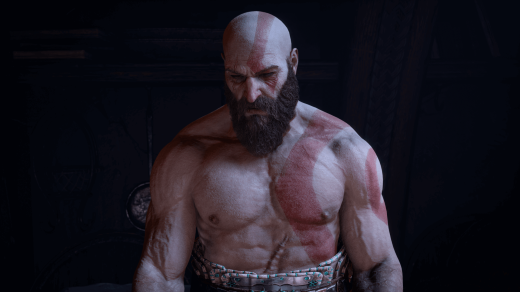
REVIEW: God of War Ragnarok — An Ode to Godhood
Raves
Rants
It’s an immense labor what Santa Monica Studios has set out to do with God of War Ragnarok. It’s not unlike the nigh impossible task of flipping the beloved franchise on its head with God of War(2018) and successfully surpass it. But like the relentless and unwavering god that Kratos is, the studio attempts to defy the impossible again with an epic and sprawling adventure that sees to conclude the apparent end of God of War’s’ long, mythology-crossing stint.

STORY (Spoiler Free)
Ragnarok is a direct sequel to God of War (2018) and picks up a few years after the events of the first game. Though there is an in-game recap to bring you back up to speed, it’s really more a refresher than a crash course for new players. It’s okay, but would definitely suggest playing the first game to really grasp Ragnarok’s story. Some time after Kratos and Atreus journeyed to the highest peak in all the realms, the two find themselves surviving Fimbulwinter’s full swing. And with Ragnarok all but inevitable, the two prepare as best they can for what is to come.

Like the branches of Yggdrasil, Ragnarok’s story is dense, wide, and overwhelming, but still part of the same trunk. Though the main plot predominantly centers around father and son, each supporting character, both familiar and new, all get their moments in the limelight. Each of them play a larger role and are far more fleshed out with no small thanks to the exceptionally talent in each of it’s stellar cast. But most interesting perhaps is the stronger focus on Atreus himself, immersing the player further in his struggle to understand the prophecies surrounding his birthright and the pressure of living under his father’s shadow.
The last game had a relatively straightforward story albeit with still a few surprises towards the end. And, though Ragnarok starts off seemingly predictable in its twists and turns, the narrative twists and turns a step further, never really making its intentions known until the optimal moment. This is an impressive storytelling feat on its own but the studio throws down the hammer hard with what is possibly the most original yet faithful interpretation of Norse Mythology in recent memory, especially considering how saturated the theme is today.

GAMEPLAY
There is so much story to absorb and yet there’s never a dull moment, thanks in part to the visceral combat in-between each story beats. You pretty much start with your main kit from the first game which includes immediate access to the Blades of Chaos. This time around the studio doubles down heavily on combat, increasing the level of meta-gaming you gain access to. Players looking for a more casual experience can choose to auto-equip items based on a preset criteria. Frequently used abilities will also level up and unlock a bonus perk, improving the usefulness of you’re favorite attacks, incentivizing you to play how you want. As mentioned, there are enhanced RPG mechanics sewn in to the game that can be optional but is a game-changer if you choose to tinker.

Atreus also plays less like a character who’s usefulness doesn’t go beyond simple call-outs. He gets his own broad skill tree now and benefits from weapons and equipment much like his father. Without spoiling anything, there will also be sections in the game where Kratos cycles between different companions, some of which come with their own sets of abilities and customizations.
Much of the overall combat experience is expanded in one way or another. There are more status effects to play around with, accessories that boost stats and gains bonus perks when equipping a set, and a whole collection of shields each with their own unique quirk catering to a particular type of playstyle. There are also new traversal mechanics that can be mixed into the combat as well, though admittedly and unfortunately, they don’t change the experience much since majority of the combat areas don’t feel varied enough. Camera lock and aim assist also feels less intuitive as before, though isn’t really much of a hindrance outside of Give Me God of War difficulty. Though certainly not perfect, none of its shortcomings take too much away from the core experience, and many can even be mitigated or enhanced thanks to the vast accessibility and gameplay options made available.

VISUALS & PERFORMANCE
Textures and overall level design of this fidelity is expected at this point from Santa Monica or PS Studios as a whole, considering how good GOW(2018)’s graphics still hold up today. Though it doesn’t sound all that impressive on paper, in its many scripted sequences the visuals really stand out, often resulting in dozens of jaw dropping wow moments that pumps even more adrenaline into your veins with each escalating encounter, though personally I think the final boss was quite underwhelming. These experiences stretch across all the 9 realms. Most of these biomes are closed and tight spaces, but are sprawling and packed with secrets, light puzzles, and fun combat encounters. That said, some areas like Svartalfheim are pretty big openworld-ish areas with plenty of secrets and lore to find and even backtrack to.




















